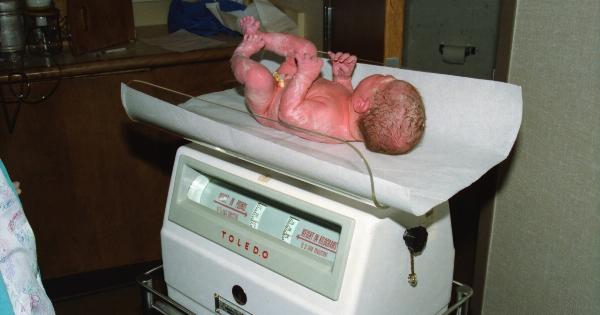Feeding your baby is an important aspect of their growth and development. As your little one transitions from breast milk or formula, introducing solid foods becomes a significant milestone.
One method of feeding your baby during this stage is using a teaspoon. In this article, we will explore all the essential information you need to know about feeding your baby with a teaspoon.
When to Start Feeding with a Teaspoon
The American Academy of Pediatrics recommends introducing solid foods to babies around six months old.
At this age, babies have better head and neck control, can sit with support, show interest in food, and can move food from the front to the back of their mouths. It is important to discuss this with your pediatrician and ensure that your baby is developmentally ready.
The Benefits of Feeding with a Teaspoon
Feeding your baby with a teaspoon offers several advantages:.
- Controlled portion sizes: Using a teaspoon allows you to provide small, manageable amounts of food, reducing the risk of overfeeding.
- Gradual introduction of textures: Starting with pureed or mashed foods on a teaspoon helps your baby gradually experience different textures.
- Improved oral motor skills: Using a teaspoon encourages your baby to develop their tongue and mouth muscles, promoting proper swallowing and speech development.
- Bonding and interaction: Feeding your baby with a teaspoon provides an opportunity for close interaction and bonding between you and your little one.
Choosing the Right Teaspoon
When selecting a teaspoon for feeding your baby, consider the following:.
- Material: Opt for a BPA-free spoon made of safe materials such as silicone or stainless steel.
- Size and shape: Choose a teaspoon with a small, shallow bowl to comfortably fit in your baby’s mouth.
- Handle length and grip: Look for a spoon with a long handle and a non-slip grip to facilitate easy feeding.
Preparing Food for Your Baby’s Teaspoon Feeding
Before using a teaspoon to feed your baby, it is essential to prepare suitable foods:.
- Start with purees: In the beginning, offer pureed foods that are easy for your baby to swallow. Examples include mashed fruits, vegetables, and cereals.
- Introduce variety: Gradually introduce various fruits, vegetables, grains, and proteins to ensure your baby receives a balanced diet.
- Consistency: Adjust the consistency of the food according to your baby’s developmental stage. Initially, make the puree smooth and gradually increase the texture as your baby gets older.
- Temperature: Test the temperature of the food by touching it to your skin. It should be warm, but not too hot to avoid burning your baby’s mouth.
Feeding Techniques
When feeding your baby with a teaspoon, try the following techniques:.
- Sit in an upright position: Hold your baby securely in an upright position, either on your lap or in a high chair.
- Eye contact and interaction: Maintain eye contact and talk to your baby throughout the feeding process to enhance bonding.
- Offer small amounts: Place a small amount of food on the spoon and gently bring it to your baby’s lips. Wait for your baby to open their mouth before offering the next bite.
- Be patient: Allow your baby to explore and adjust to the new sensation of eating with a spoon. It may take time for them to get the hang of it.
- Encourage self-feeding: As your baby’s motor skills develop, encourage them to hold the spoon and try self-feeding.
Signs That Your Baby is Full
Recognizing the signs that your baby is full is important during feeding:.
- Closing their mouth or turning their head away from the spoon
- Spitting out food
- Losing interest in eating
- Playing with food instead of eating it
Cautions and Considerations
While feeding your baby with a teaspoon is generally safe and beneficial, it is important to keep the following precautions and considerations in mind:.
- Avoid feeding hazards: Do not offer foods that pose a choking risk, such as whole grapes, nuts, or large chunks of food.
- Introduce allergenic foods cautiously: When introducing allergenic foods like peanuts, tree nuts, or shellfish, do so one at a time, waiting a few days between each new food to monitor for any adverse reactions.
- Consult your pediatrician: If you have concerns about your baby’s feeding journey or suspect any allergies or feeding difficulties, consult your pediatrician for guidance.
Celebrate Milestones and Enjoy the Journey
Feeding your baby with a teaspoon allows you to witness and celebrate their growth and development. Remember to enjoy this journey, capturing precious moments as your baby explores new tastes and textures.
Cherish the bonding moments created during mealtimes and savor every milestone achieved.



























